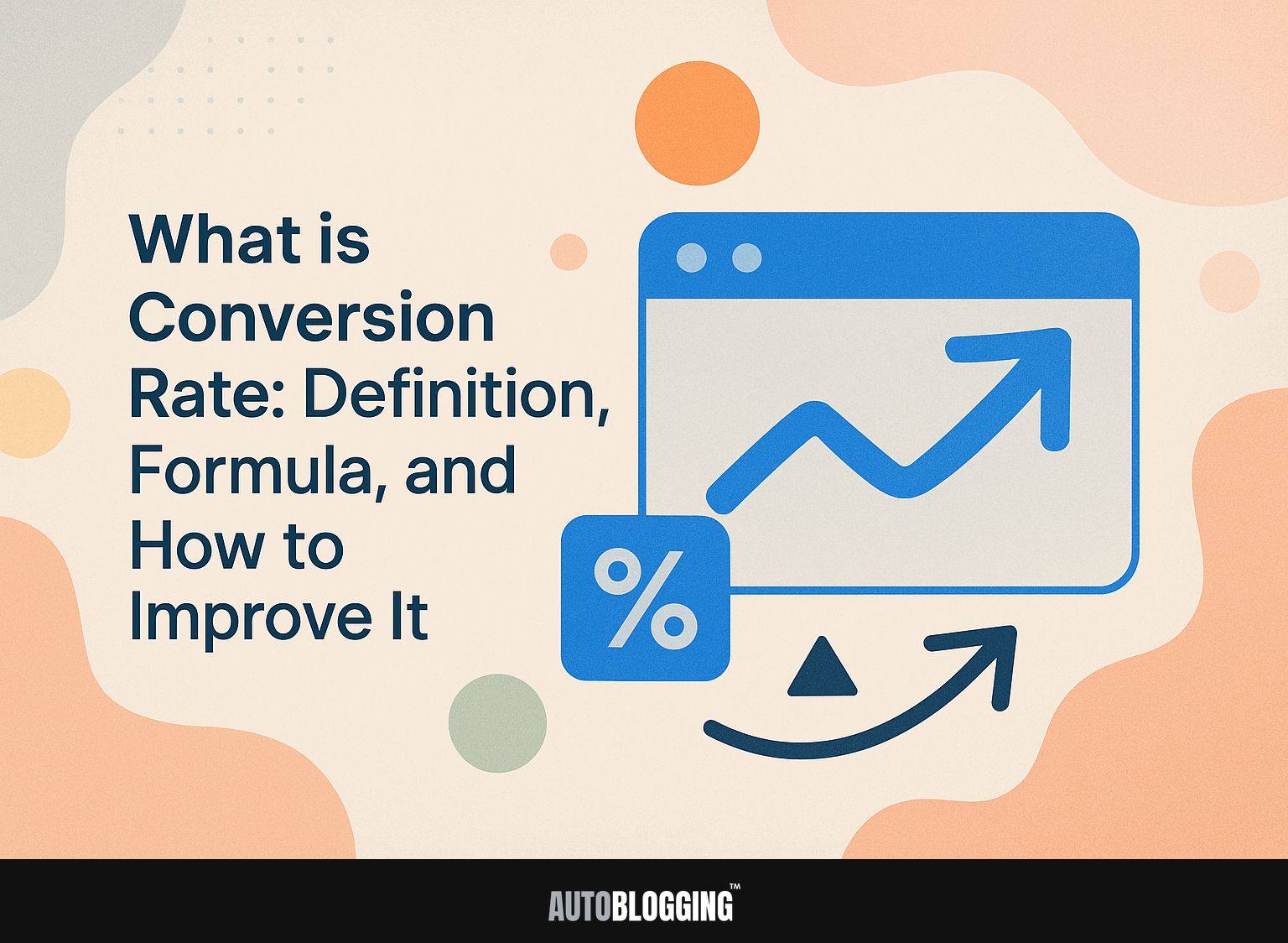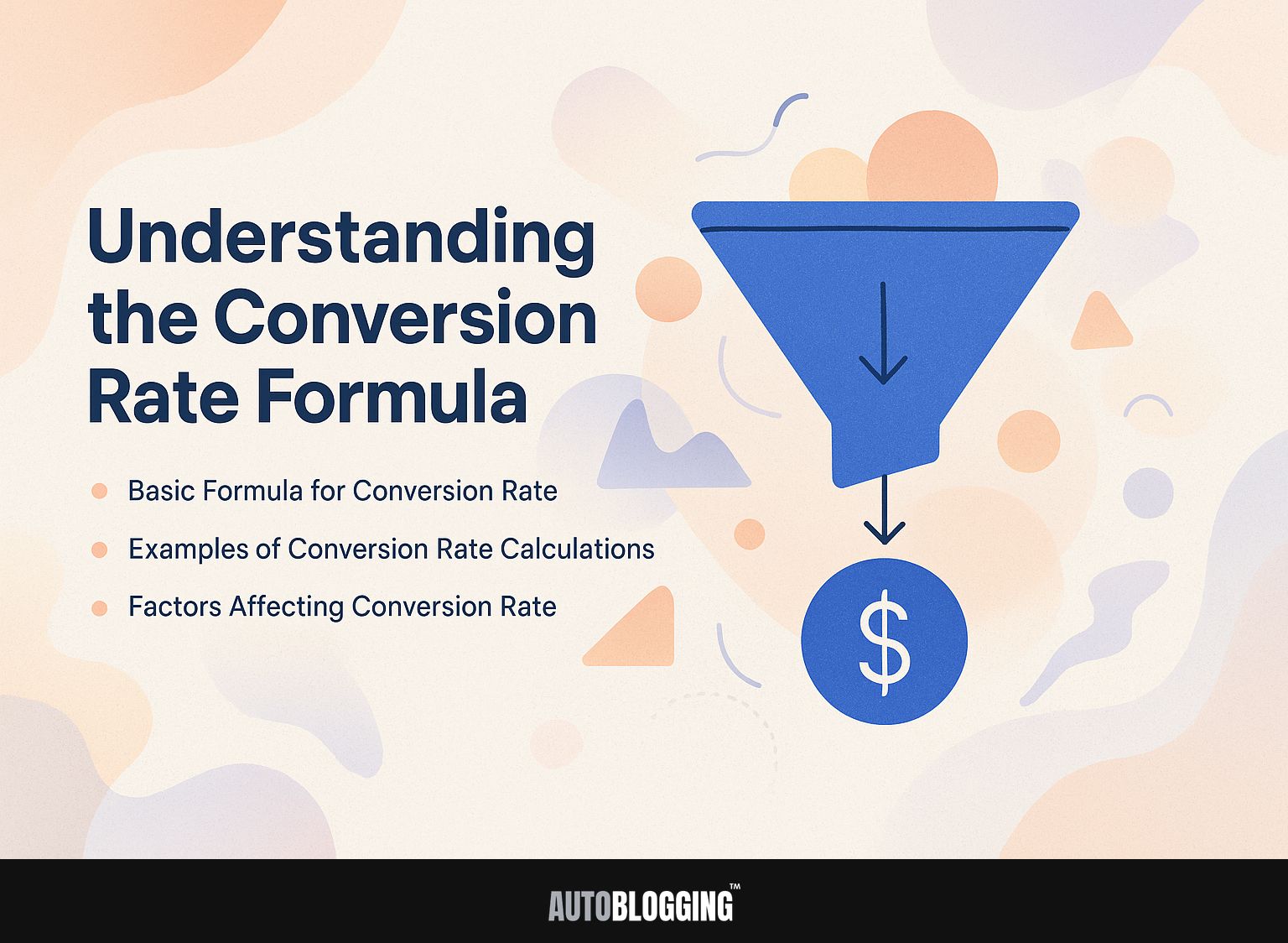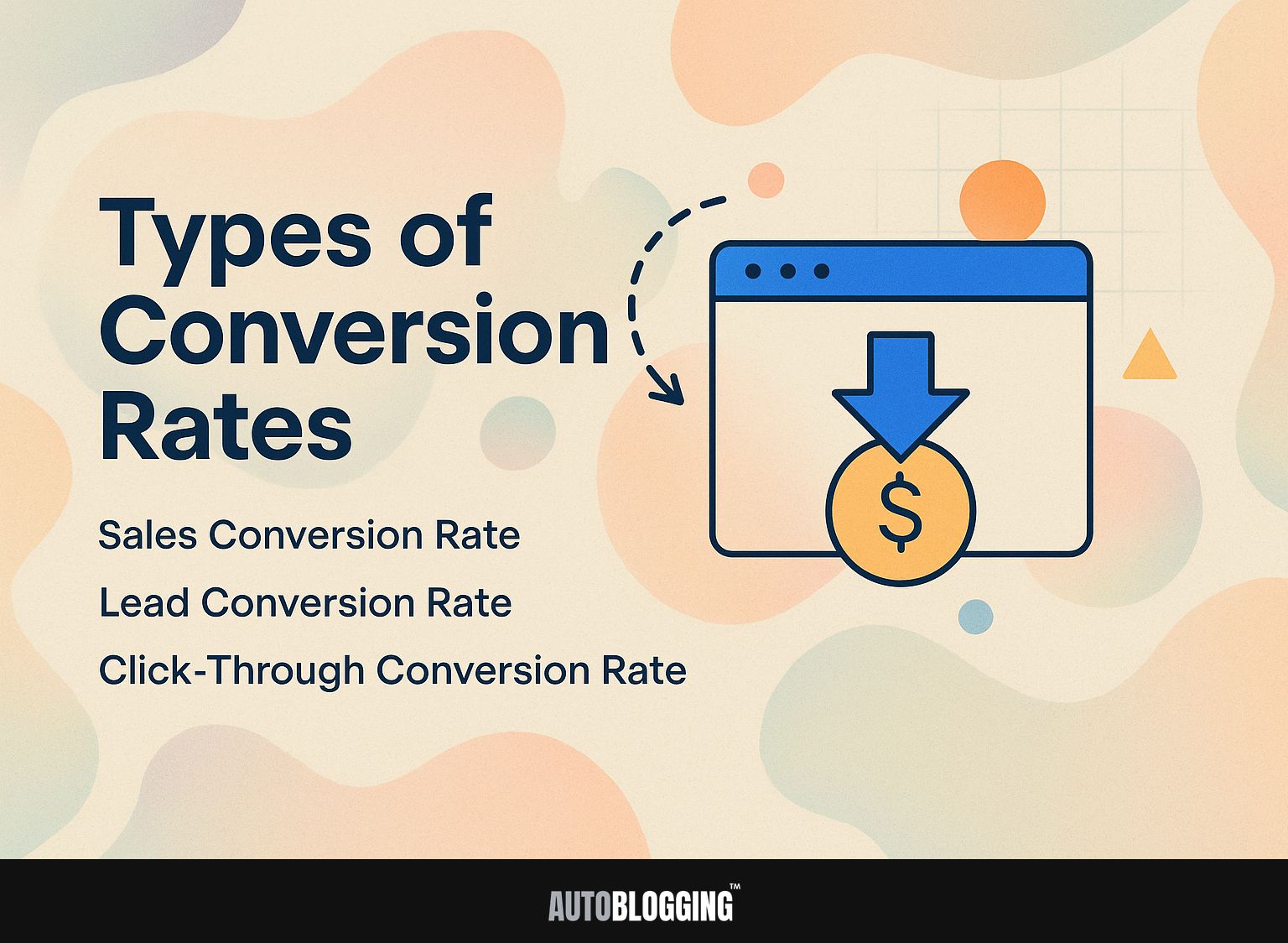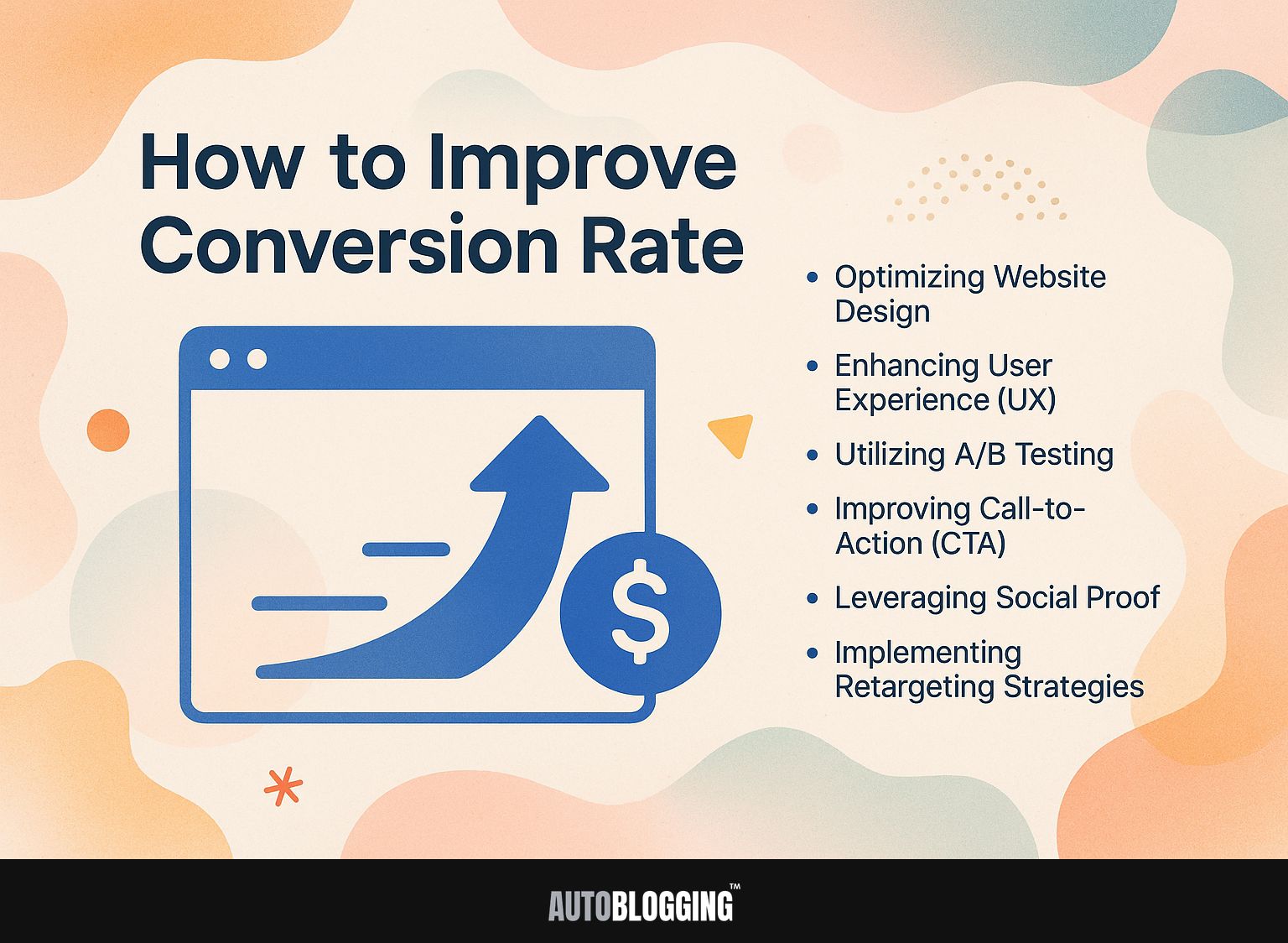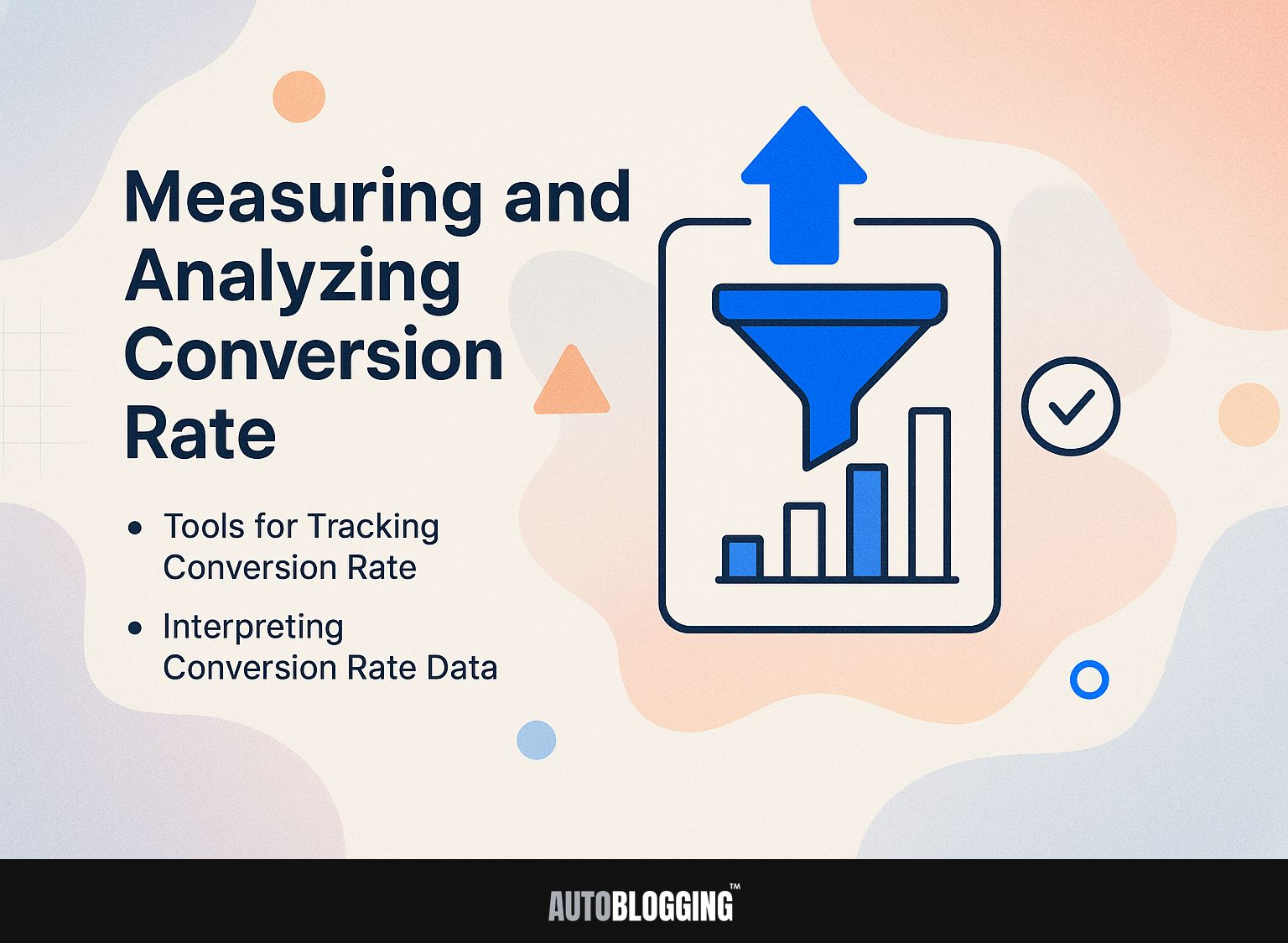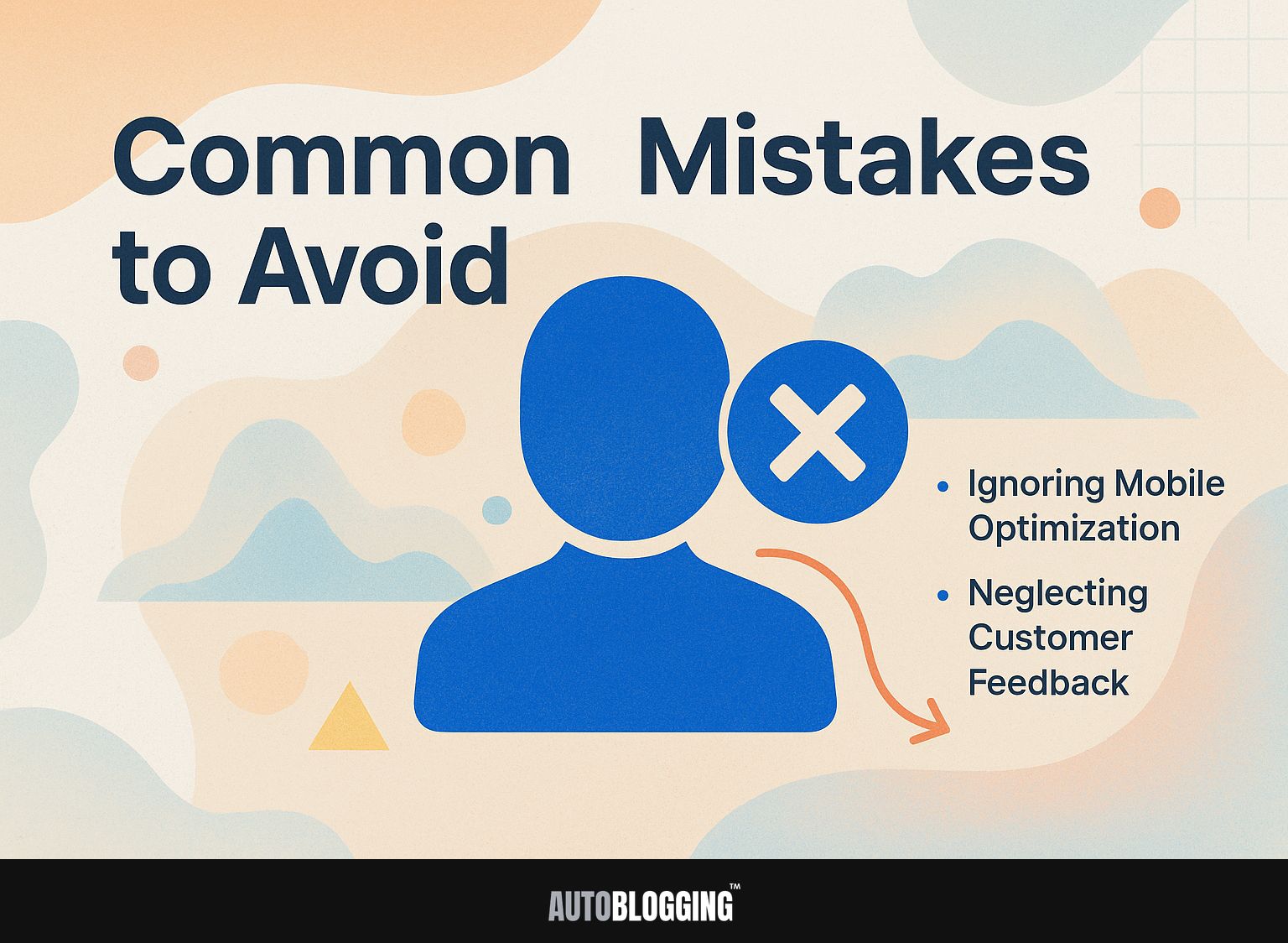Knowing the Conversion Rate is important for every eCommerce business that wants to succeed. This important conversion metric checks how well your marketing plan works, letting you measure conversion results. This article will explain what Conversion Rate means, show you how to calculate it, and give practical advice for improving conversion rates. Whether you’re experienced in marketing or new to it, improving your conversion rate can greatly affect your profits. Let’s dive in!
Key Takeaways:
- Conversion rate calculates the percentage of people visiting a website who complete a specific task, like buying something or submitting a form.
- Improving website design, trying out different versions with A/B tests, and showing user reviews can help increase conversion rates.
- Regularly following and studying conversion rate information, and steering clear of frequent errors such as ignoring mobile-friendly design and customer comments, can help businesses improve their conversion rate and increase sales.
Contents
1. Definition of Conversion Rate
The conversion rate is defined as the percentage of visitors who complete a desired action on a website, calculated by the formula: (Total Conversions / Total Visitors) x 100.
For example, if a website receives 1,000 visitors and 50 of them make a purchase, the conversion rate would be calculated as follows: (50 / 1000) x 100 = 5%. This means 5% of visitors bought something.
To improve this rate, businesses can implement strategies such as:
- Optimizing their landing pages
- Enhancing call-to-action buttons
- Providing limited-time offers to entice visitors into converting
2. Importance of Conversion Rate in Digital Marketing
A high conversion rate indicates effective marketing strategies and user engagement, directly impacting an eCommerce business’s revenue and customer acquisition costs.
In eCommerce, average conversion rates typically range from 2% to 5%. For example, Company A implemented targeted email marketing campaigns focused on cart abandonment, leading to a 15% rise in their conversion rate.
By segmenting their audience and personalizing communication, they effectively captured lost sales. Making landing pages better and improving how users experience the site increased conversion rates.
Monitoring tools like Google Analytics can show how users act, helping businesses to improve their strategies regularly and stay competitive in a busy market.
Learning the Conversion Rate Formula
Knowing the conversion rate formula is necessary for evaluating the success of online business strategies and improving performance metrics.
1. Basic Formula for Conversion Rate
To calculate the conversion rate, take the number of conversions, divide by the total number of visitors, and multiply by 100 to find the percentage.
For instance, if your website has 1,000 visitors and 50 of them make a purchase, the formula would be (50/1000) x 100, resulting in a conversion rate of 5%. To improve this rate, focus on enhancing your landing pages.
Tools like Google Optimize let you test different page layouts using A/B testing. Heatmap tools such as Hotjar show you where users click the most. Implementing clear CTAs and reducing page load times also contribute to higher conversions.
2. Examples of Conversion Rate Calculations
Let’s check out some examples that demonstrate how to calculate conversion rates in various situations, to make the practical use obvious.
- For an eCommerce site with 2,000 visitors and 30 sales, the conversion rate is 1.5%, indicating room for improvement in user engagement or product appeal.
- A lead generation page with 500 visitors yielding 50 leads reflects a strong conversion rate of 10%, suggesting effective messaging and target audience alignment.
- Meanwhile, a landing page attracting 1,000 visitors with 100 sign-ups also showcases a 10% conversion rate, highlighting successful calls to action.
These measurements show what’s effective and where changes might be needed.
3. Factors Affecting Conversion Rate
Various essential elements affect conversion rates, including how a website looks, marketing plans, and how users interact with the site.
Website design is important; trying out different layouts with A/B testing can greatly improve how users interact with the site and their overall happiness. For instance, testing a simpler checkout process can reduce cart abandonment rates by up to 20%.
User experience is equally important; a site that loads in under three seconds tends to retain 40% more visitors. For those curious about enhancing this aspect further, our comprehensive guide on User Experience (UX) best practices offers valuable insights. Distinguishing between organic traffic and paid ads helps allocate your marketing budget effectively.
Matching your products or services with what customers like, using surveys or feedback forms, can help you get your message across clearly and increase sales.
Types of Conversion Rates
Different types of conversion rates help understand different parts of an online business’s performance, helping in creating specific marketing strategies.
1. Sales Conversion Rate
The sales conversion rate measures the effectiveness of turning visitors into paying customers, calculated by dividing the number of sales by the total traffic.
For example, if an eCommerce site receives 1,500 visitors in a month and achieves 75 sales, the conversion rate would be calculated as (75/1500) x 100 = 5%. Knowing this measurement is important for companies because it directly affects income and marketing plans.
A low conversion rate might mean you need clearer product descriptions, easier website use, or specific advertising to reach your ideal customers. Regularly looking at this rate helps improve sales methods and increase customer interaction.
2. Lead Conversion Rate
Lead conversion rate assesses the percentage of site visitors who engage in actions like signing up for newsletters or downloading resources.
For example, if a website attracts 1,000 visitors and generates 150 leads, the conversion rate is calculated as (150/1000) x 100 = 15%. This measurement is very important for businesses that prioritize getting new customers because it shows how well their marketing efforts and website are working.
By keeping an eye on and adjusting this rate, businesses can find successful methods, make communication clearer, and focus better on different user groups to increase conversions.
3. Click-Through Conversion Rate
The click-through conversion rate evaluates the effectiveness of marketing campaigns by measuring the percentage of users who click on a specific call-to-action.
For instance, if an ad receives 500 clicks from 10,000 impressions, the click-through rate is calculated as (500/10,000) x 100, resulting in a 5% rate.
This metric is important because it shows the effectiveness of your ads and guides changes in your target audience and creative approach.
By looking at the click-through rates of different campaigns, marketers can make their messages better and increase interaction, making sure they spend their advertising money wisely.
How to Improve Conversion Rate
Increasing the number of people who make a purchase or sign up requires various methods. Concentrate on creating a user-friendly website, improving its design, and enhancing marketing efforts to attract more visitors.
1. Optimizing Website Design
Making your website easier to use can help more visitors become customers by simplifying how they find their way around and complete actions. Make sure users can easily find important sections such as product pages or contact forms.
Implement responsive design ensuring your site looks great on any device; tools like Google Mobile-Friendly Test can help assess this. Try A/B testing tools such as Optimizely to try out different designs and call-to-action elements.
Monitor metrics like bounce rates and conversion rates through Google Analytics to gauge the effectiveness of these changes. Small adjustments can lead to substantial gains in user engagement.
2. Enhancing User Experience (UX)
Enhancing user experience (UX) is critical for improving conversion rates, focusing on factors like site speed, mobile optimization, and intuitive interfaces.
To improve user experience, use these five methods:
- First, make the page load faster by compressing images and using browser caching; try to get the load time under three seconds.
- Next, make sure your site works well on mobile devices by using tools like Google’s Mobile-Friendly Test to find problems.
- Make the menu easy to use by testing it with real people, which lets you make better changes to the menu based on what they say.
- Place clear calls to action (CTAs) above the fold to guide users seamlessly.
- Reduce distractions with a minimalist design, as seen on successful sites like Apple, which maintains focus on their products.
3. Utilizing A/B Testing
A/B testing is a useful way for improving how well a webpage turns visitors into customers by letting businesses compare two different webpage versions to find out which one works best. To do A/B testing effectively, use tools like Google Optimize or Optimizely.
For example, you could try different headlines to see which one attracts more customer attention or try different CTA buttons to increase interaction.
Always make sure your test runs long enough to get meaningful results-usually, this means at least 100 conversions for each variant. Reviewing this data helps you make informed decisions that enhance your website’s performance.
4. Improving Call-to-Action (CTA)
Improving call-to-action (CTA) messages can significantly increase the number of users who follow through with the desired action.
To make your CTAs better, try these tips:
- First, use action-oriented language like ‘Get Started’ instead of ‘Submit.’ This creates a sense of urgency and encourages users to act.
- Second, position your CTAs above the fold, ensuring they are visible without scrolling, which captures attention immediately.
- Try A/B testing to try out various colors and button sizes; even minor changes can greatly affect conversion rates. For further insights, see also: How to Improve Click-Through Rate.
Data indicates that a strong call-to-action can increase conversion rates by up to 200%.
5. Leveraging Social Proof
Using social proof-like testimonials, reviews, and case studies-can greatly improve trust and increase conversion rates.
For example, Amazon successfully presents customer reviews that show product quality and help create trust. By displaying ratings on product pages, they report an increase in conversions by up to 35%.
Similarly, incorporating a dedicated testimonials section on your website can illustrate customer satisfaction. Tools like Trustpilot or Yotpo can facilitate this process, enabling you to collect and display reviews seamlessly.
To measure effectiveness, track metrics like engagement and conversion rates before and after implementing these social proof strategies.
6. Implementing Retargeting Strategies
Implementing retargeting strategies allows businesses to re-engage visitors who did not convert initially, improving overall conversion efficiency.
For instance, Facebook Ads allows businesses to create custom audience segments based on user interactions with their website. A good campaign could focus on users who looked at specific product pages but did not buy, offering them a limited-time discount.
Google Ads supports similar retargeting, enabling display ads to appear on partner sites visited by engaged users.
Key metrics to track include click-through rates (CTR), conversion rates, and return on ad spend (ROAS). Keeping an eye on these can improve campaigns and make them work better.
Measuring and Analyzing Conversion Rate
Monitoring and analyzing conversion rates is essential for measuring the effectiveness of marketing strategies, enhancing campaigns, and setting goals for conversions. To effectively increase these conversion rates, it’s crucial to drive the right kind of traffic to your site. Learn how to boost your website traffic with targeted strategies to support your marketing efforts.
1. Tools for Tracking Conversion Rate
There are many tools for tracking conversion rates. Google Analytics is popular because it offers many features and is free to use.
As well as Google Analytics, try Hotjar for heatmaps and to understand user behavior. It costs $39/month.
HubSpot provides a strong CRM that includes conversion tracking for $50 a month, perfect for inbound marketing plans.
Optimizely, costing $49 per month, specializes in A/B testing. It lets you check the effectiveness of different landing pages.
To set up effective conversion tracking, clearly define conversion goals like form submissions or product purchases. Regularly check performance and make changes to strategies when needed.
2. Interpreting Conversion Rate Data
Looking at conversion rate data means analyzing numbers to find helpful information for developing marketing strategies and improving processes.
To effectively analyze conversion data, focus on three key areas: traffic sources, user behavior, and engagement metrics.
- Start by identifying which channels drive the most visitors-be it organic search, social media, or email campaigns. Tools like Google Analytics facilitate this process by offering detailed breakdowns.
- Next, examine how users interact; monitor measurements like bounce rates and average session times. This helps highlight how engaging your content is.
- Measure engagement through conversion goals and click-through rates. For example, seeing that a particular ad results in many conversions can help decide where to invest and adjust strategies.
Common Mistakes to Avoid
Avoiding common mistakes is important for improving conversion rates, as these errors can greatly slow down business growth and customer interaction.
1. Ignoring Mobile Optimization
Not paying attention to mobile-friendly designs can greatly reduce conversion rates, as more than half of all web traffic worldwide comes from mobile devices.
To address this, start by assessing your site’s mobile-friendliness with tools like Google’s Mobile-Friendly Test. This will highlight specific issues such as slow loading times or content widths that are not optimal for smaller screens.
Implement design techniques that make your website work well on various device sizes. Make sure images load fast and minimize pop-ups that disrupt users.
Regularly testing and updating your site’s mobile version can greatly improve user interaction and potentially increase conversions by up to 20%.
2. Neglecting Customer Feedback
Not listening to customers can lead to missed opportunities to improve products, as their feedback is important for raising conversion rates.
To get feedback from customers, use surveys with tools like Google Forms or SurveyMonkey. These tools help you create your own questions and look at the results quickly. Combine this with sessions where users try out your product, giving immediate feedback.
For example, a clothing retailer used customer feedback to tweak their sizing chart, resulting in a 20% increase in sales due to improved fitting, while a SaaS company saw a 30% conversion rate rise after incorporating user suggestions into their app design. Using these methods can greatly improve your knowledge of customer needs.
Frequently Asked Questions
1. What is Conversion Rate: Definition?
Conversion rate is the percentage of people who visit a website and complete a specific action, like buying something or submitting a form. It’s an important measure to see how well a website turns visitors into buyers or contacts.
2. What is the Formula for Calculating Conversion Rate?
The formula for calculating conversion rate is: (Total Conversions / Total Website Visitors) x 100. For example, if a website had 500 conversions from 10,000 visitors, the conversion rate would be 5%.
3. How Can I Improve my Conversion Rate?
To increase the conversion rate, concentrate on making your website design, user experience, and content more attractive and easier to use. You can also run A/B tests, use persuasive call-to-actions, and provide social proof to increase trust and credibility.
4. Why is Conversion Rate Important for Businesses?
Conversion rate is important for businesses because it directly impacts their bottom line. A higher conversion rate means more customers or leads, which can lead to increased sales and revenue. It also helps businesses understand their target audience and make data-driven decisions to improve their marketing and sales strategies.
5. What is a Good Conversion Rate?
A good conversion rate varies depending on the industry and type of website. On average, a conversion rate of 2-3% is considered good, but some websites have conversion rates as high as 10-15%. It’s important to set realistic goals and continuously strive to improve your conversion rate based on your industry benchmarks.
6. Why is it Important to Track and Monitor Conversion Rate?
Checking and keeping track of the conversion rate is important for knowing how well your website and marketing are doing. It assists you in discovering methods to improve your website and use data to make decisions that increase visitor engagement on your site. It also helps you measure the effectiveness of different marketing campaigns and make adjustments for better results.



